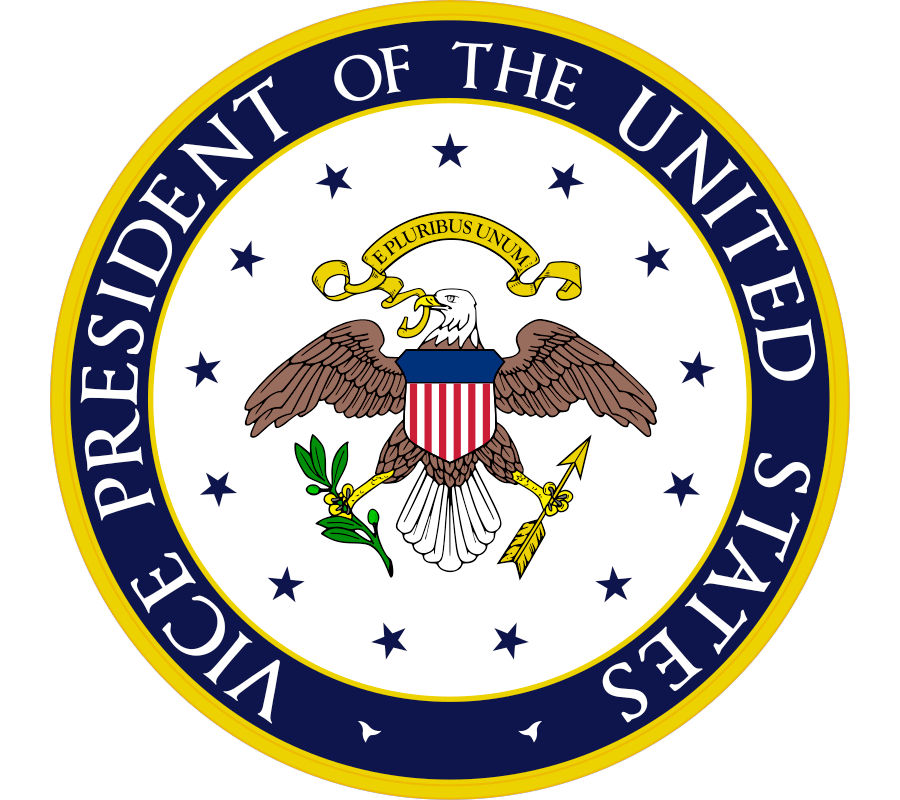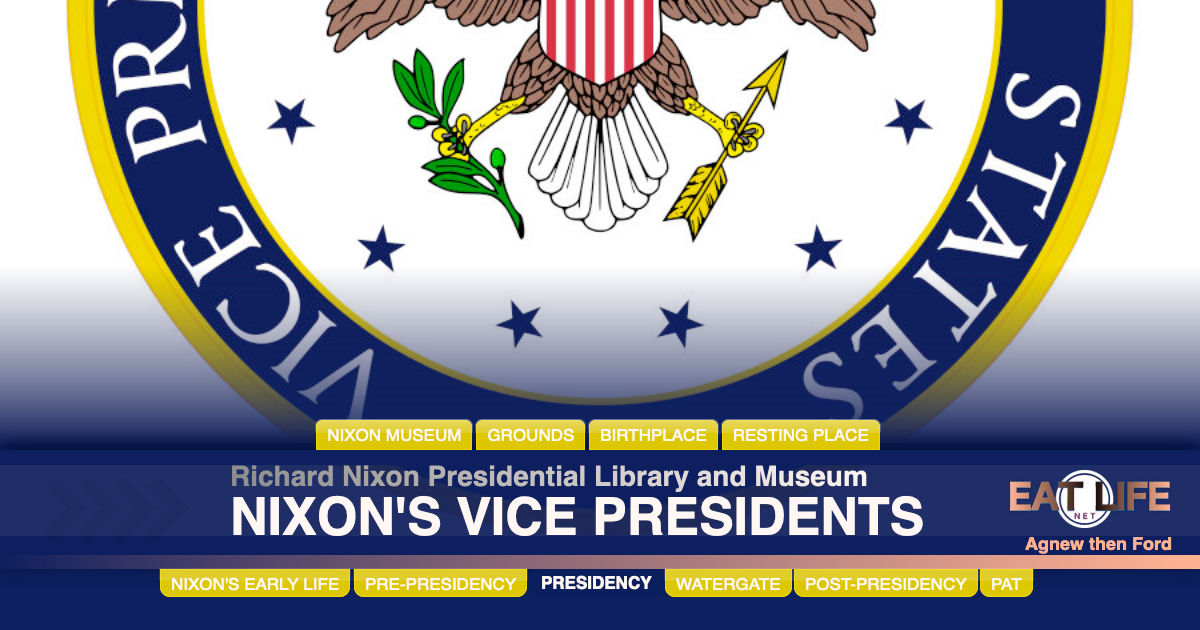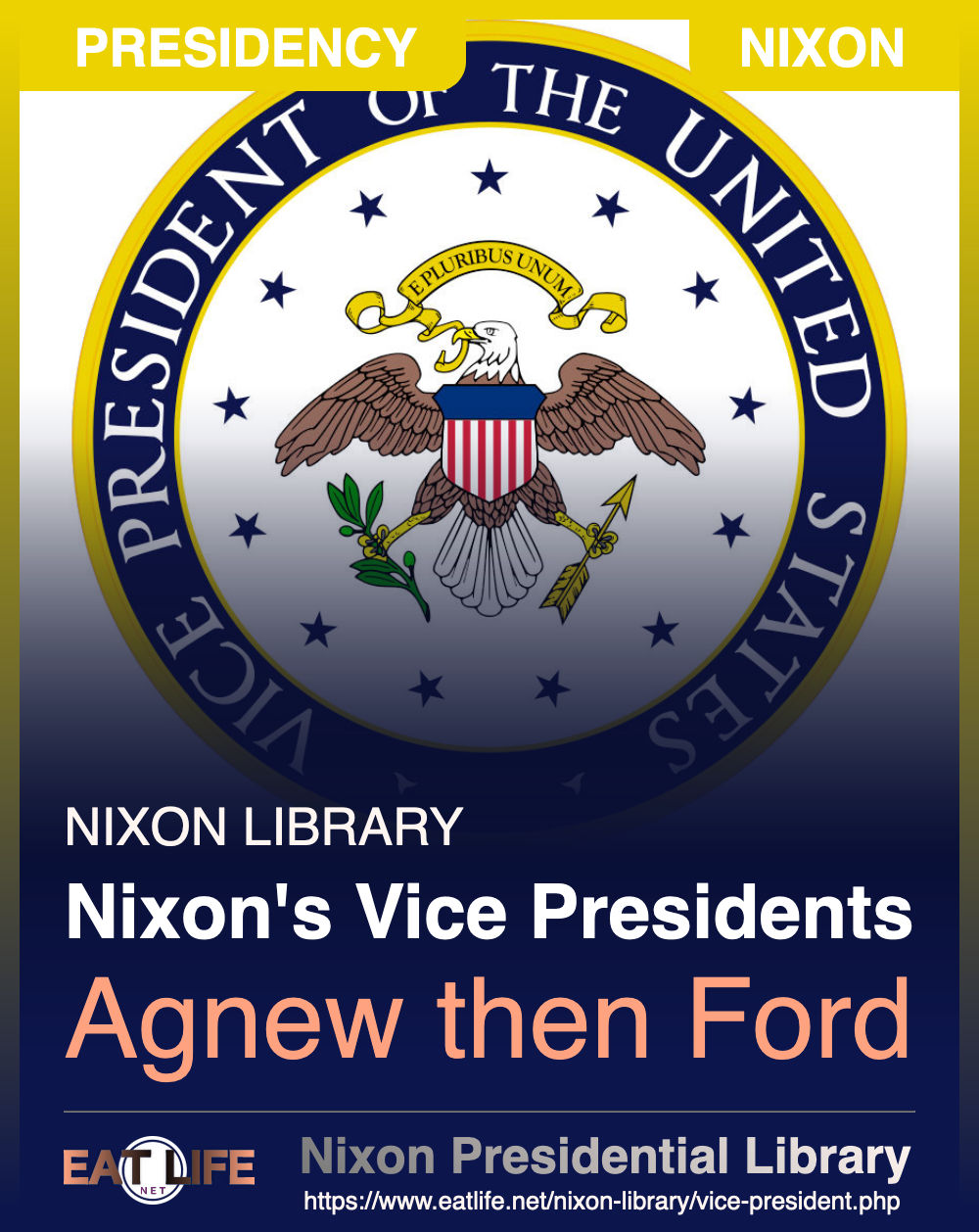A relative unknown on the national scene before 1968, Spiro Agnew - a Democrat turned Republican - rose from Baltimore County Executive to Governor of Maryland to Vice President of the United States in three short years.
Agnew made a major mark - and acquired a lot of powerful enemies - by his colorful attacks on what he called the elitist attitudes and anti-administration bias of the powerful and influential TV networks.
Agnew's second term as Vice President would be short-lived, however. Allegations of bribery and tax evasion while he was Governor of Maryland began to emerge in early 1973. By October he decided to accept a plea bargain in return for no further prosecution. He resigned the Vice Presidency on October 10, 1973.
I had been impressed by Agnew as a man who seemed to have a great deal of inner strength. He had a good record as a moderate progressive, effective Governor. He took a forward-looking stance on civil rights, but he had firmly opposed those who resorted to violence in promoting their cause.
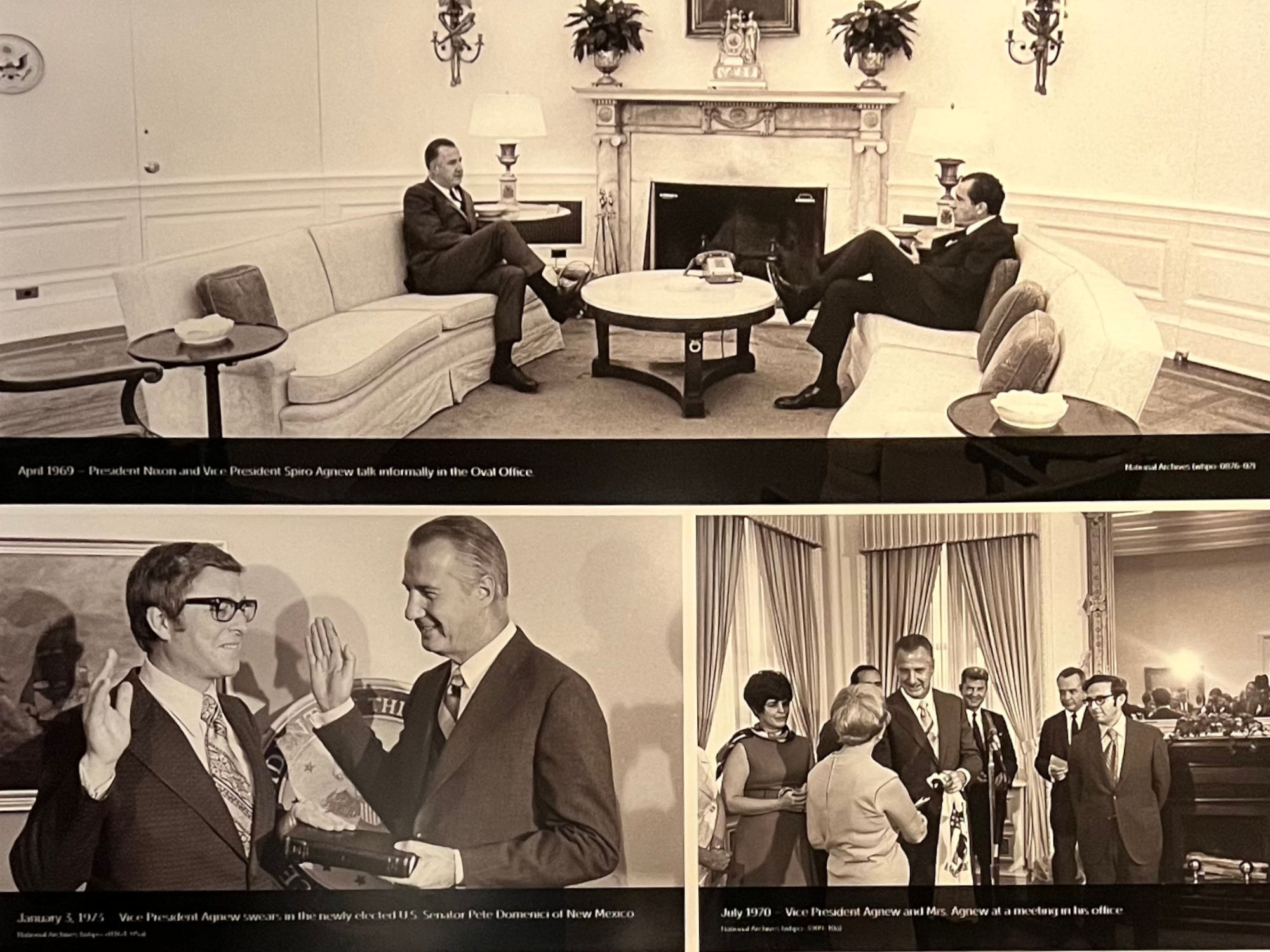
- April 1969 President Nixon and Vice President Spiro Agnew talk informally in the Oval Office
- January 3, 1973 Vice President Agnew swears in the newly elected U.S. Senator Pete Domenici of New Mexico
- July 1970 Vice President Agnew and Mrs. Agnew at a meeting in his office.
Of the several possible candidates, House Minority Leader Gerald R. Ford seemed assured of a quick and unanimous Congressional confirmation. Nixon had known and been friends with Ford since they both served in Congress together more than 20 years earlier, He respected Ford's experience and judgment, and he nominated him for Vice President on October 13, 1973.
The Senate confirmed Gerald Ford as Vice President on November 27 and the House on December 6. That night Ford was sworn in as the 40th Vice President of the United States.
Above all, he is a man who, if the responsibilities of the great office that I hold should fall upon him the leadership of America is in good hands
- Richard Nixon, October 12, 1973 announcing his intention to nominate Ford
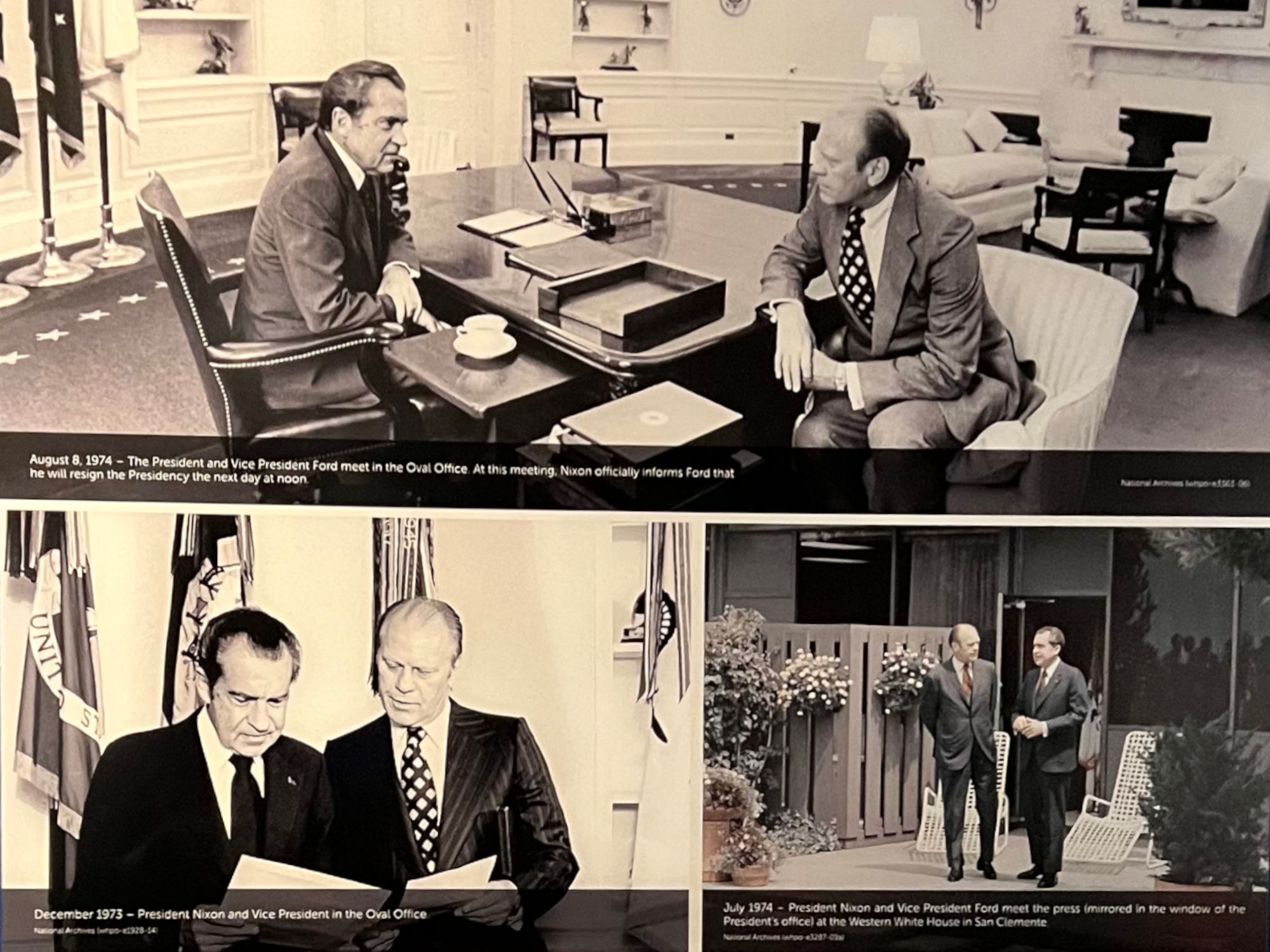
- August 8, 1974 The President and Vice President Ford meet in the Oval Office. At this meeting, Nixon officially informs Ford that he will resign the Presidency the next day at noon.
- December 1973 President Nixon and Vice President in the Oval Office.
- July 1974 President Nixon and Vice President Ford meet the press (mirrored in the window of the President's office) at the Western White House in San Clemente.
